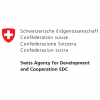Executive Summary
A multimedia reportage is a new and modern way of digital storytelling. The best multimedia stories are multi-dimensional. By combining video, audio, photography, graphics, illustrations, quotes, and narrative or explanatory text, this type of storytelling brings action, emotion, and intellectual understanding together in one package. Multimedia reportage uses the strengths of each medium to tell the story in a way that draws in readers by addressing different senses. Text, image, video and audio merge into a perfect unity that breaks out of classic layouts and goes beyond traditional formats. Multimedia storytelling, sometimes also called scrollytelling or long-form journalism, is organized in a modular way, and allows nonlinear reception. Thanks to its combination of very personal stories with deep-diving background information, multimedia reportage is particularly well suited to exploring and presenting water and sanitation topics.
The concept of scrollytelling originated with a 2012 New York Times story "Snow Fall - Avalanche at Tunnel Creek". The narrative format was innovative: text on moving images, scrolling that seamlessly opened a new page, video tied to text on the next page, photos used as in a classic reportage. These different media elements were not new in themselves, but the way of combining them was game-changing. Despite being relatively text-heavy, the 2012 story heralded a new era of multimedia reporting.
Multimedia reportage requires effort, time and teamwork – but in the end you will produce something uniquely powerful.
How to produce a multimedia story
Proper project planning is the key to success. Develop a clear concept for the story. Define the parameters of your story, organize the story in chapters, and decide which media are the most suitable for each aspect of the story. Set up your story so that the different media elements talk to and complement each other.
After your work in the field is complete, look again at your project plan. Evaluate the content you have collected - compare what you have now to the original story you wanted to tell. Expect the story to change. For the story you can tell now, catalogue the media you have and where it should appear in each story section. In particular, consider the following points:
- Be targeted and particular in your content collection - don't gather too much. That said, you will probably still gather an overwhelming amount of content in your first few projects. Learn from that mistake.
- Edit as you go - don’t wait until all content is collected before beginning the editing process.
- Produce short videos - preferably 1-2 minutes, not longer than 3-4 minutes.
- Keep scenes of “talking heads” to an absolute minimum - preferably none at all. If they must be included, show them for just a few seconds then cut to “b-roll” footage with voice-over. Take special care with action shots - scenes with constant and rapid movement may play badly online due to web video’s low frame rate.
- Ensure high-quality audio recording in the field and use only high-quality sound in your video.
- Avoid using music to simply “spice up” your video - think carefully about why you want to use it. Consider how it adds to or detracts from the story you are telling. Music strongly influences viewers’ subconscious perception of the story - use it with integrity. Note the copyright if you are using music. To be on the safe side use creative commons files.
Use photos in different ways. A single photo can establish a mood and/or provide an introduction to story segments. Used sequentially in a gallery or slideshow, multiple photos can tell an entire story. Use captions if there is any further information needed to understand the photos.
For more information on the different media formats, please see the relevant fact sheets in this toolkit.
Production tools and platforms
Different platforms and tools are available for you to use in producing and publishing your multimedia story online, including under your own domain. Most of these tools have a free version as well as a more elaborate paid version, and are quite easy to handle.
You can find platforms and publishing tools here:
BBC Academy: Multimedia Journalism
In this section of the BBC Academy's website, multimedia journalist Fergus Walsh tells one story, and how other stories are planned and told in multimedia newsrooms across the BBC.
The Guardian: Firestorm – The Story of the Bushfire in Tasmania
Interactive feature about the Tasmanian bushfires in 2013.


